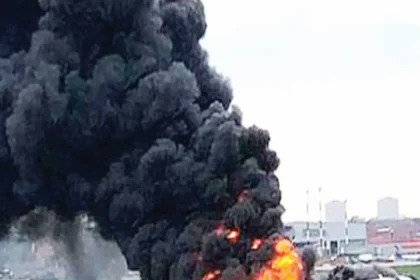Why the Air Feels Like 100° Soup Right Now – 5 Shocking Reasons Behind the Extreme Humidity (And When It Will End)
Some hot days feel even worse thanks to high humidity, trapped heat and dew points. Cities are especially vulnerable
It’s not your imagination — some hot days really do feel worse than others. Some feel like stepping into an oven, while others feel more like wading through a steam room.
As an intense heat wave grips much of the United States, from the Midwest to the East Coast, it’s the steam room that’s dominating for many places this week.
We talk a lot about temperature, but the thermometer tells only part of the story. A dry 99 degrees Fahrenheit in Phoenix might feel harsh but bearable. The same temperature in New York or Philadelphia this week can feel far more oppressive, partly because of higher humidity — that’s increased water vapor in the air.
When humidity surges, the body struggles to cool itself. Normally, when your body gets too hot, it cools itself by perspiring. The evaporation of sweat carries heat away, acting like a natural air-conditioner. But when the air is already saturated with moisture, that evaporation process slows or stalls. As the National Weather Service puts it, “the human body feels warmer in humid conditions.”
The opposite is true when humidity decreases, so the body feels cooler in dry conditions, even if the temperature is climbing.
To capture this, the Weather Service uses something called the heat index, also known as apparent temperature, to describe what that combination of heat and humidity feels like.
On a humid day, that index can rise dramatically. For example, when the air temperature is 100 degrees Fahrenheit, and the relative humidity is 55 percent, the heat index can shoot up to a sweltering 124 degrees Fahrenheit.
And that’s in the shade. The service says that standing in full sun can make the temperature feel as much as 15 degrees hotter. So if the heat index if 120, your body might actually feel something closer to 135 degrees Fahrenheit.

The agency has four levels of heat-related risk, based on temperature and relative humidity. At the lowest level, the “caution” classification, you may feel tired with prolonged exposure. As humidity increases or temperatures rise, you could move into the “extreme caution” category, where heat cramps and exhaustion become possible.
A heat index between 103 and 124 degrees Fahrenheit is considered “dangerous,” where the risk of heat-related illness becomes likely. Over the weekend, parts of the Midwest fell into this category, with heat index values between 107 and 115 degrees Fahrenheit across areas of Iowa, Minnesota, Nebraska and South Dakota. When the heat index exceeds 125 degrees Fahrenheit, conditions are classed as “extreme danger,” with a heat stroke highly likely.
However, in cities, humidity isn’t the only factor; urban areas trap heat too. Dark surfaces like on buildings and sidewalks absorb heat through the day and release it slowly overnight, in what is known as the urban heat island effect, which can make city centers several degrees warmer than their surrounding areas. Tall buildings block breezes, and concrete structures hold onto moisture after rainstorms. Cars and other vehicles pump out heat as well as water vapor. That combination can make a heat wave feel all the more hot and humid.
There’s also the matter of dew point, or the temperature the air needs to be cooled to achieve a relative humidity of 100 percent. Meteorologists often prefer dew point over relative humidity as a measure of comfort. The higher the dew point, the muggier it will feel.
A dew point of 55 degrees Fahrenheit or less is considered comfortable. Above 65 degrees Fahrenheit, it starts to feel muggy and oppressive, especially when paired with high temperatures. In Washington, D.C., the dew point on Monday morning was 72 degrees Fahrenheit, and forecast to reach a temperature of 100 degrees Fahrenheit that day.
This week, there won’t be much relief for at least a few days. A heat dome has settled over the Eastern United States, trapping hot air beneath it, like a lid on a pot. The heat dome has already brought triple-digit temperatures to parts of the Midwest and is now tightening its grip on the East Coast. Highs in the 90s and low 100s are expected, with heat index values climbing near 110 degrees in some areas.
Cities like Philadelphia and New York are under excessive heat warnings. Philadelphia’s heath department declared a heat health emergency, opening cooling centers and urging residents to check on neighbors, loved ones and pets. New York City Emergency Management warned on social media: “Heat builds. It compounds. It kills quietly.”
Overnight temperatures may offer little relief. In cities such as Washington, Baltimore and New York, lows are forecast to hover around 80 degrees Fahrenheit, limiting the body’s ability to recover after the extreme heat of the day.
Read Also : How the B-2 Bomber Flies Nonstop for 44 Hours Without Engine Burnout – 7 Secrets Behind Its Stealth Power








